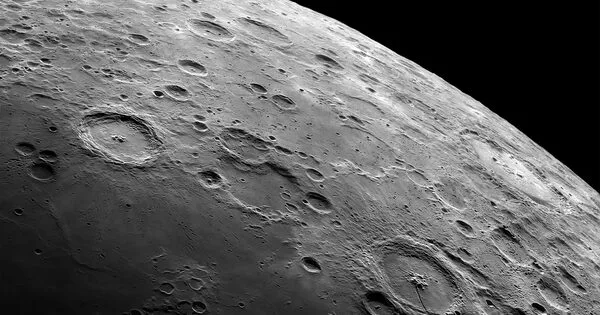The latest photographs of the Moon have been released by India’s space agency as its third lunar mission begins its descent towards the little-explored south pole.
The images were captured by Vikram, the lander of Chandrayaan-3, which began the final phase of its mission on Thursday.
The Vikram spacecraft, which has a rover in its belly, is scheduled to touch down near the South Pole on August 23.
On Thursday, the lander separated from the propulsion module that was carrying it near the Moon.
Close-ups of rocks and craters on the Moon’s surface are seen in the black-and-white photographs. One of the images also displays the propulsion module.

Both Chandrayaan-3 and Russia’s Luna-25 are on their way to the Moon’s south pole and are slated to land next week.
Luna-25, Russia’s first Moon mission since 1976, when it was part of the Soviet Union, was launched last week and is set to create history by landing softly on the 21st or 22nd of August, just days before India. If it is successful, Chandrayaan-3 will have to settle for a close second-place finish in reaching the South Pole.
India, however, will be only the fourth country after the United States, the erstwhile Soviet Union, and China to make a soft landing on the Moon.
On Friday, the Indian Space Research Organization (Isro) announced that the lander module had begun its descent to a lower orbit.
Chandrayaan-3, India’s third lunar exploration mission, is planned to build on the success of its previous missions.
It comes 13 years after the country’s first Moon mission, which discovered water molecules on the barren lunar surface and showed that the Moon had an atmosphere during the day.
The Chandrayaan-2 mission, which included an orbiter, a lander, and a rover, was launched in July 2019 but was only partially successful. Its orbiter is still orbiting and studying the Moon, but the lander rover failed to make a soft landing and crashed during touchdown.
According to Isro president Sreedhara Panicker Somanath, the space agency meticulously reviewed the data from its crash and conducted modeling exercises to rectify the flaws in Chandrayaan-3, which weighs 3,900kg and costs 6.1 billion rupees ($75 million; £58 million). The lander module weighs around 1,500kg, including the Pragyaan rover, which weighs 26kg.
The Moon’s south pole remains mostly unexplored – the surface area that remains in shade there is significantly larger than that of the Moon’s north pole, and scientists believe this indicates the possibility of water in permanently darkened locations.
One of the primary goals of both Chandrayaan-3 and Luna-25 is to search for water ice, which scientists believe could one day enable human habitation on the Moon. It might potentially be used to provide propellant to spacecraft traveling to Mars and other distant locations.
















